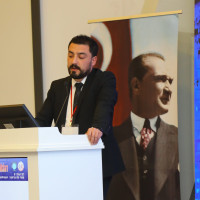General Format
The manuscript should be typed in a Microsoft Word file, single-column format, double-spaced with 2.5 cm margins on each side, and 11-point type in Times New Roman font. All abbreviations in the text must be defined the first time they are used (both in the abstract and the main text), and the abbreviations should be displayed in parentheses after the definition. Abbreviations should be limited to those defined in the AMA Manual of Style, current edition. Authors should avoid abbreviations in the title and abstract and limit their use in the main text.
All submissions are screened by a similarity detection software (iThenticate by CrossCheck). If artificial intelligence (AI), machine learning or similar technologies has been used to write and/or edit the manuscript, the name and version of the AI tool, along with the AI-generated content included in the paper should be explained in the methods section. In addition, an acknowledgements section should be added which discloses that an AI tool has been used to create the manuscript and states that authors take full responsibility for the AI-generated content and both the technology used and the content generated by it is explained in methods section.
In the event of alleged or suspected research misconduct, e.g., plagiarism, citation manipulation, and data falsification/fabrication, the Editorial Board will follow and act in accordance with COPE guidelines. Each individual listed as an author should fulfill the authorship criteria recommended by the International Committee of Medical Journal Editors (ICMJE - www.icmje.org). The ICMJE recommends that authorship be based on the following 4 criteria:
1. Substantial contributions to the conception or design of the work; or the acquisition, analysis, or interpretation of data for the work; AND
2. Drafting the work or revising it critically for important intellectual content; AND
3. Final approval of the version to be published; AND
4. Agreement to be accountable for all aspects of the work in ensuring that questions related to the accuracy or integrity of any part of the work are appropriately investigated and resolved.
In addition to being accountable for the parts of the work he/she has done, an author should be able to identify which co-authors are responsible for specific parts of the work. In addition, authors should have confidence in the integrity of the contributions of their co-authors. All those designated as authors should meet all four criteria for authorship, and all who meet the four criteria should be identified as authors. Those who do not meet all four criteria should be acknowledged in the title page of the manuscript.
Cover letter: A cover letter must be provided with all manuscripts. This letter may be used to emphasize the importance of the study. The authors should briefly state the existing knowledge relevant to the study and the contributions their study make to the existing knowledge. The correspondent author should also include a statement in the cover letter declaring that he/she accepts to undertake all the responsibility for authorship during the submission and review stages of the manuscript.
Title page: A separate title page should be submitted with all manuscripts and should include the title of the manuscript, running title, name(s), affiliation(s), major degree(s) and the ORCID iD(s) of the author(s). The name, address, telephone (including the mobile phone number) and fax numbers and e-mail address of the corresponding author should be clearly listed. Grant information and other sources of support should also be included.
Abstract: All submissions (except for Letters to the Editor) should be accompanied by an abstract limited to 300 words. A structured abstract is only required with original articles and it should include the following subheadings: OBJECTIVE, METHODS, RESULTS, CONCLUSION
1. Original Articles: Original prospective or retrospective studies of basic or clinical researches in areas relevant to Medicine.
The manuscript should contain English abstract, maximum of 300 words, and the structured abstract should contain the following sections: Objective, Methods, Results, and Conclusion. Three to six words or determinative groups of words should be written as keywords below the abstract.
The text of articles reporting original research might contain up to 3500 words (excluding Abstract, references and Tables) and should be divided into Introduction, Methods, Results, Discussion, Conclusion sections. References should also be included so that their number does not exceed 40. Articles need subheadings within these sections to further organize their content.
2. Review Articles: The authors may be invited to write or should be expert in that subject of review article.
The manuscript should contain both Turkish and English abstracts, a maximum of 300 words, but a structured abstract is not required. The main text should include titles or related topics to further organize the content. The text of review articles might contain up to 5000 words (excluding Abstract, references and Tables). Number of references should not exceed 60.
3. Case Reports: Brief descriptions of a previously undocumented disease process, a unique unreported manifestation or treatment of a known disease process, or unique unreported complications of treatment regimens.
The manuscript should contain both Turkish and English abstracts, a maximum of 150 words, but a structured abstract is not required. The main text should include titles or related topics to further organize the content. The manuscript could be of up to 2000 words (excluding references and abstract) and could be supported with up to 20 references.
4. Editorial: Special articles are written by editor or editorial board members. An abstract is not usually included in editorials.
5. Letter to the Editor: These are letters which include different views, experiments and questions of the readers about the manuscript and should preferably be related to articles previously published in the journal or views expressed in the journal. These should be short and decisive observations. They should not be preliminary observations that need a later paper for validation. The letter could have up to 1000 words and a maximum of 5 references.
6. Pictorial Essay: This is a continuing medical education exercise with the teaching message in the figures and their legends. Text should include a brief abstract; there may be as many as 30 figure parts. No new information is included. The value of the paper turns on the quality of the illustrations. Authors can submit dynamic images (e.g. video files) or include supplemental image files for online presentation that further illustrate the educational purpose of the essay. Maximums: Pages of text – 4 (1,500 words); References – 15; Figures – 15 or total of 30 images; No table
Table-1. Limitations for each manuscript type
Type of Manuscript | Word Limit | Abstract Word Limit | Reference limit
| Table limit
| Figure limit
|
Original Articles
| 3500 | 300 | 40 | 6 | 6 |
Review Articles
| 5000 | 300 | 60 | 6 | 10 |
| Case Reports | 2000 | 150 | 20 | 2 | 5 |
Letter to the Editor
| 1000 | No abstract | 5 | 2 | 2 |
| Pictorial Essay | 1500 | 100 | 20 | No Tables | 20 |
References
Authors are encouraged to cite primary literature rather than review articles in order to give credit to those who have performed the original work. Reference listings must be in accordance with ICMJE standards and numbered consecutively at the end of the manuscript in the order in which they are mentioned in the text. While citing publications, preference should be given to the latest, most up to date publications. If an ahead of print publication is being cited the DOI number should be provided. Authors are responsible for the accuracy of references. Journal titles should be abbreviated in accordance with the journal abbreviations in Index Medicus/ Medline/PubMed (for journal abbreviations consult the List of Journals indexed for MEDLINE, published annually by NLM).
The name of the journal should be written and a point should be placed at the end. If the authors' names are more than 6, the first 3 authors should be written and should be followed by "et al.". Page numbers should be written openly.
References must be numbered in square brackets within the article and listed in order of their first appearance in the text. The reference styles for different types of publications are presented in the following examples:
Journal article: Korytina G, Kochetova O, Akhmadishina L, Viktorova E, Victorova T. Polymorphisms of cytochrome P450 genes in three ethnic groups from Russia. Balkan Med J. 2012;29:252-260.
Book: Tos M. Cartilage tympanoplasty. 1st ed. Stuttgart-New York: Georg Thieme Verlag; 2009.
Book chapter: Tos M, Stangerup SE. The relationship between secretory otitis and cholesteatoma. In: Tos M, Thomsen J, Peitersen E, editors. Cholesteatoma and mastoid surgery. Amsterdam: Kugler & Ghedini; 1989:325-330.
Article in electronic format: Morse SS. Factors in the emergence of infectious diseases. Emerg Infect Dis (serial online) 1995 Jan-Mar (cited 1996 June 5): 1(1): (24 screens). Available from: http://www.ncbi.nlm.nih.gov/pmc/articles/PMC2626828/pdf/8903148.pdf.


















 Web
Web

















